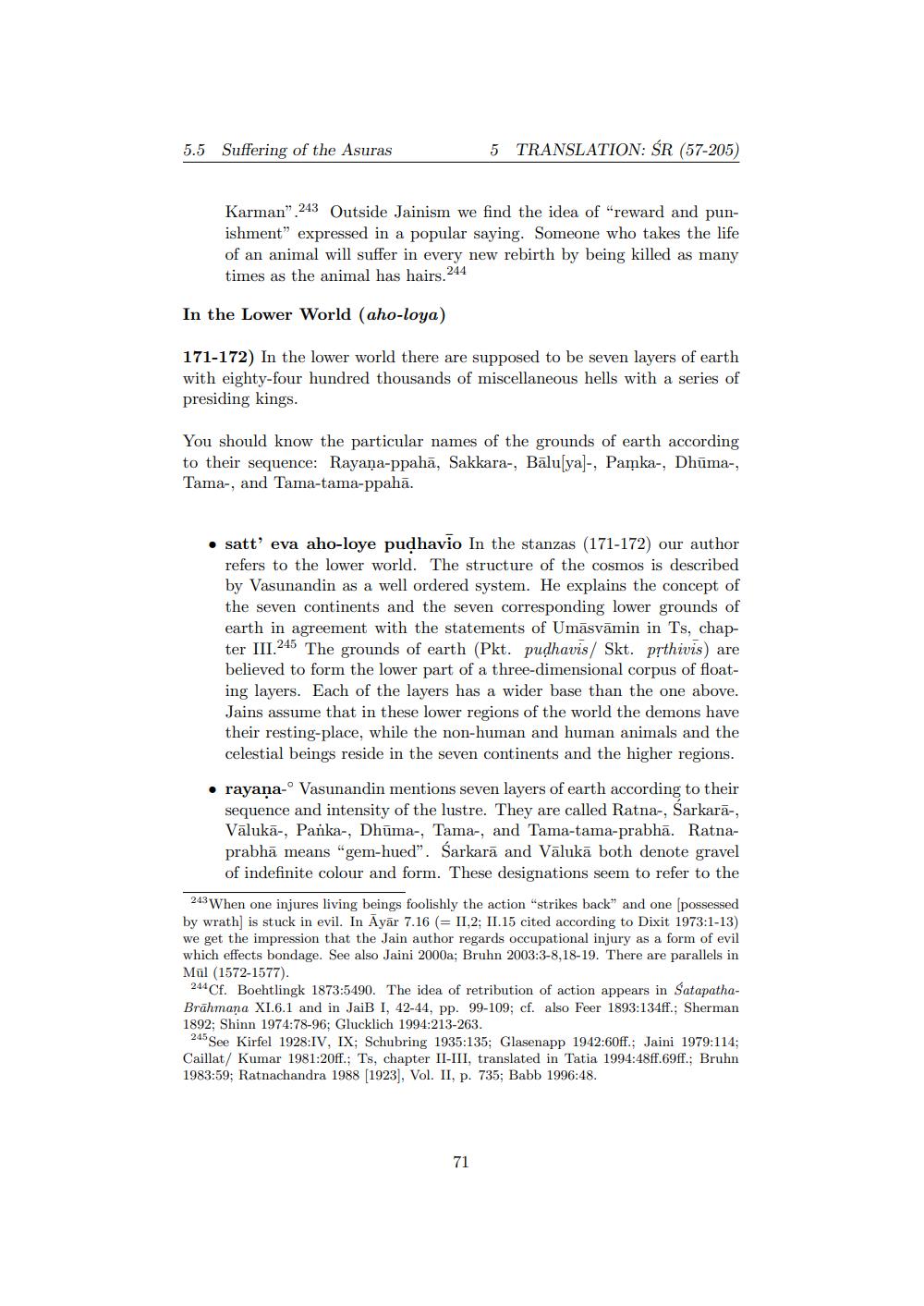________________
5.5
Suffering of the Asuras
5 TRANSLATION: ŚR (57-205)
Karman" 243 Outside Jainism we find the idea of "reward and punishment" expressed in a popular saying. Someone who takes the life of an animal will suffer in every new rebirth by being killed as many times as the animal has hairs.244
In the Lower World (aho-loya)
171-172) In the lower world there are supposed to be seven layers of earth with eighty-four hundred thousands of miscellaneous hells with a series of presiding kings.
You should know the particular names of the grounds of earth according to their sequence: Rayaņa-ppahā, Sakkara-, Bālusya)-, Pamka-, Dhūma-, Tama-, and Tama-tama-ppahā.
• satt' eva aho-loye pudhavio In the stanzas (171-172) our author
refers to the lower world. The structure of the cosmos is described by Vasunandin as a well ordered system. He explains the concept of the seven continents and the seven corresponding lower grounds of earth in agreement with the statements of Umāsvāmin in Ts, chapter III.245 The grounds of earth (Pkt. pudhavis/ Skt. pệthivis) are believed to form the lower part of a three-dimensional corpus of floating layers. Each of the layers has a wider base than the one above. Jains assume that in these lower regions of the world the demons have their resting-place, while the non-human and human animals and the celestial beings reside in the seven continents and the higher regions.
• rayana- Vasunandin mentions seven layers of earth according to their sequence and intensity of the lustre. They are called Ratna-, Sarkarā-, Vālukā-, Panka-, Dhūma-, Tama-, and Tama-tama-prabhā. Ratnaprabhā means "gem-hued". Sarkarā and Vālukā both denote gravel of indefinite colour and form. These designations seem to refer to the
243 When one injures living beings foolishly the action "strikes back" and one possessed by wrath is stuck in evil. In Ayār 7.16 (= I1,2; II.15 cited according to Dixit 1973:1-13) we get the impression that the Jain author regards occupational injury as a form of evil which effects bondage. See also Jaini 2000a; Bruhn 2003:3-8,18-19. There are parallels in Mül (1572-1577).
244 Cf. Boehtlingk 1873:5490. The idea of retribution of action appears in SatapathaBrāhmana XI.6.1 and in JaiB I, 42-44, pp. 99-109; cf. also Feer 1893:134ff.; Sherman 1892; Shinn 1974:78-96; Glucklich 1994:213-263
245 See Kirfel 1928:IV, IX; Schubring 1935:135; Glasenapp 1942:60ff.; Jaini 1979:114; Caillat/ Kumar 1981:20ff.; Ts, chapter II-III, translated in Tatia 1994:48ff.69ff., Bruhn 1983:59; Ratnachandra 1988 (1923), Vol. II, p. 735; Babb 1996:48.




